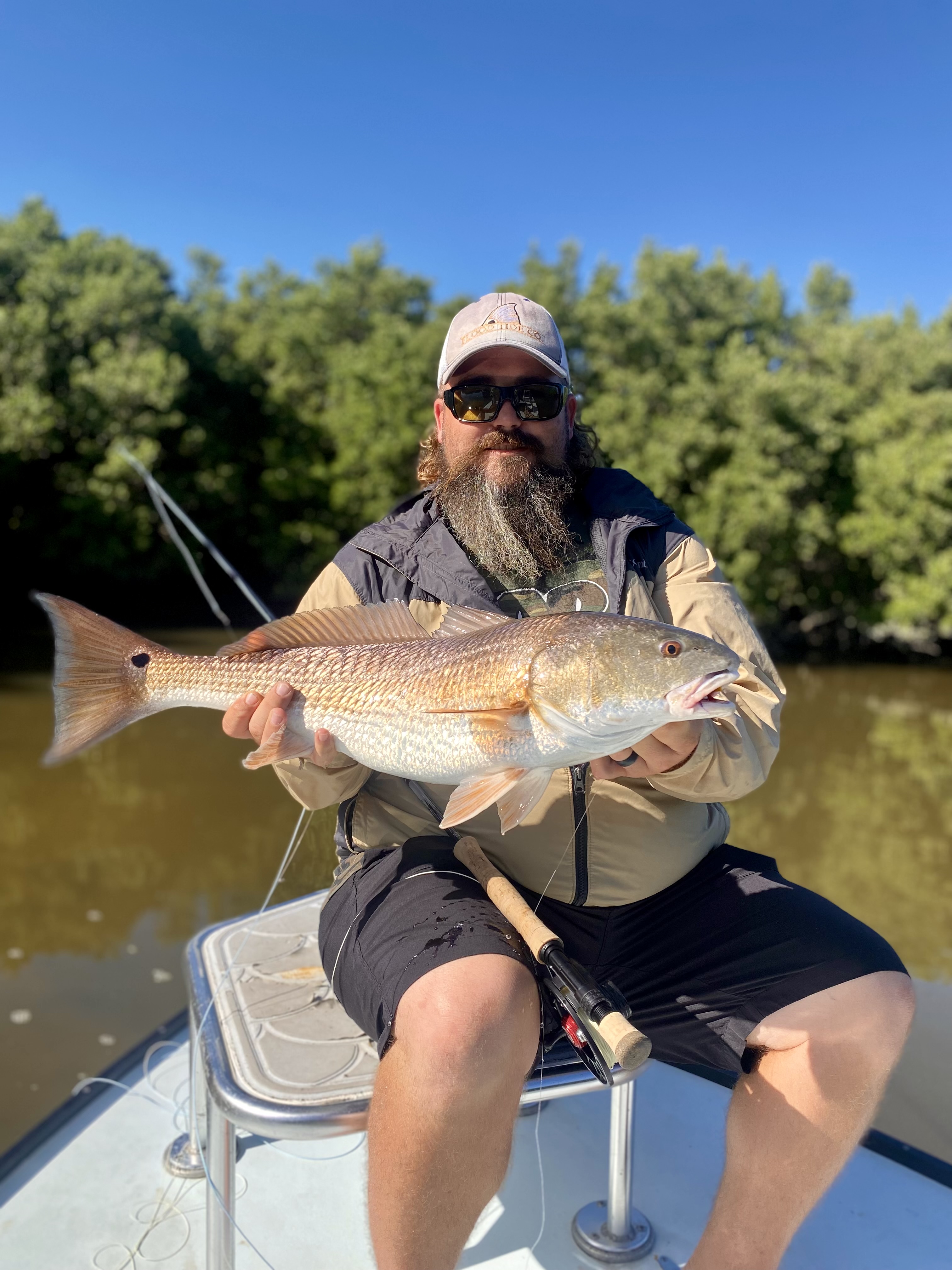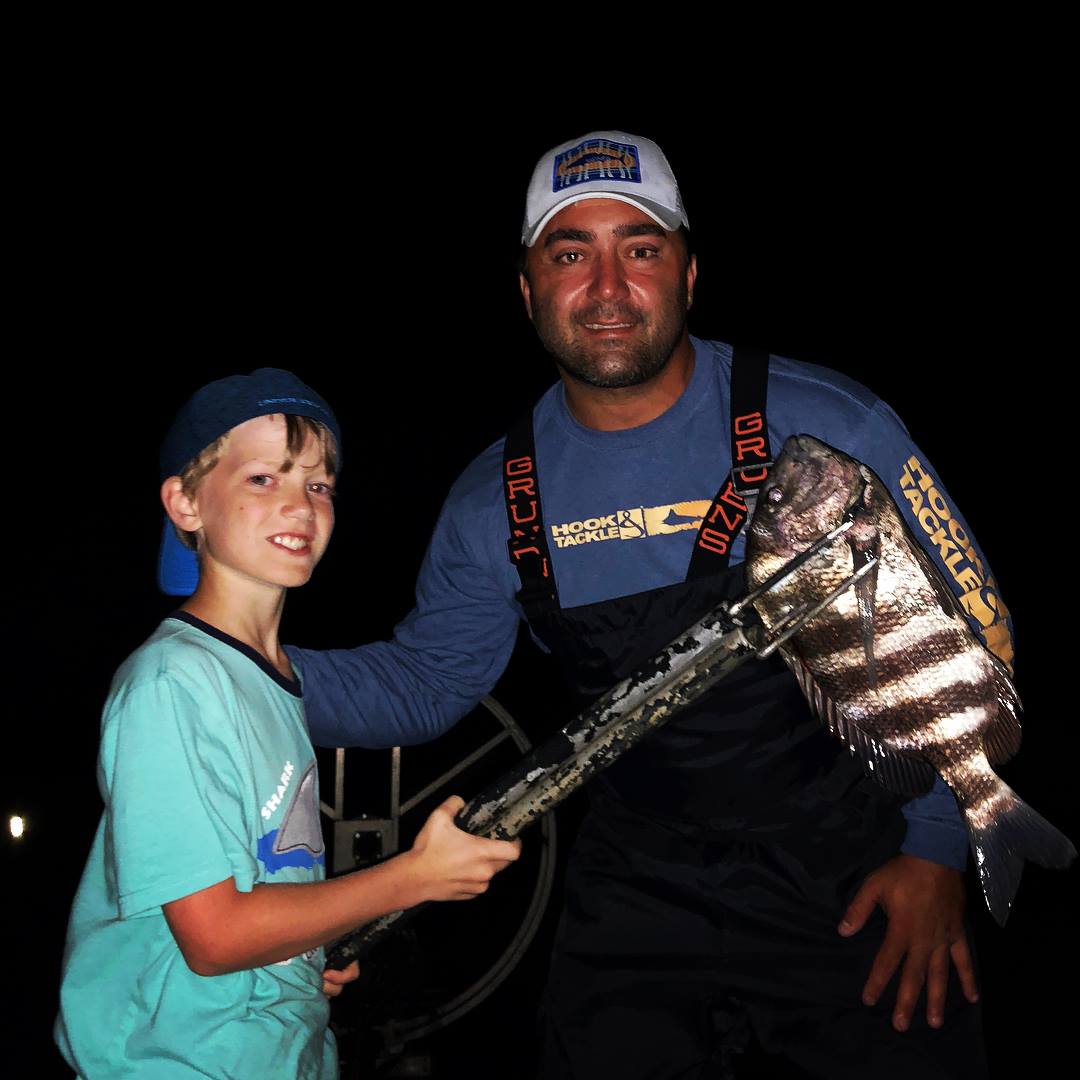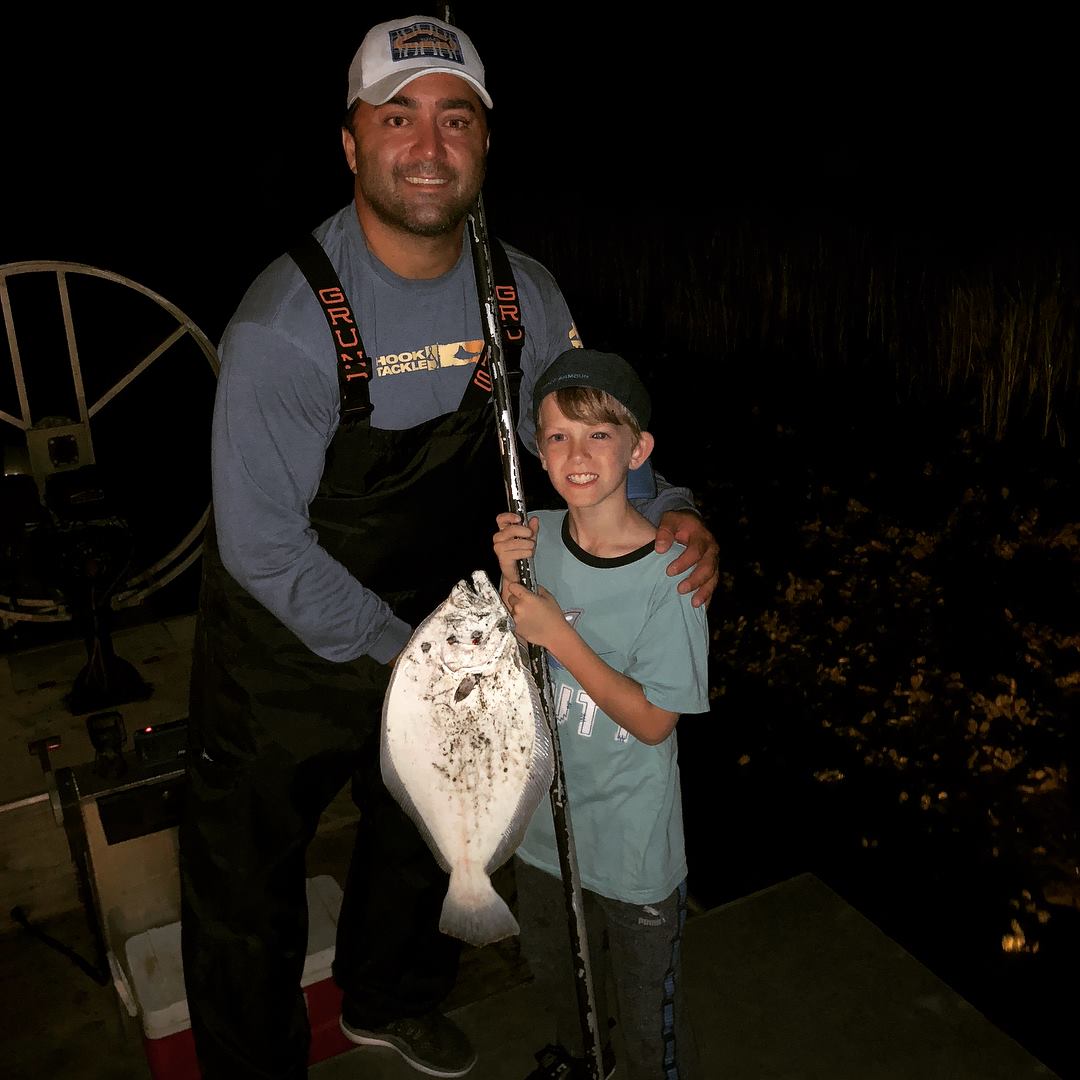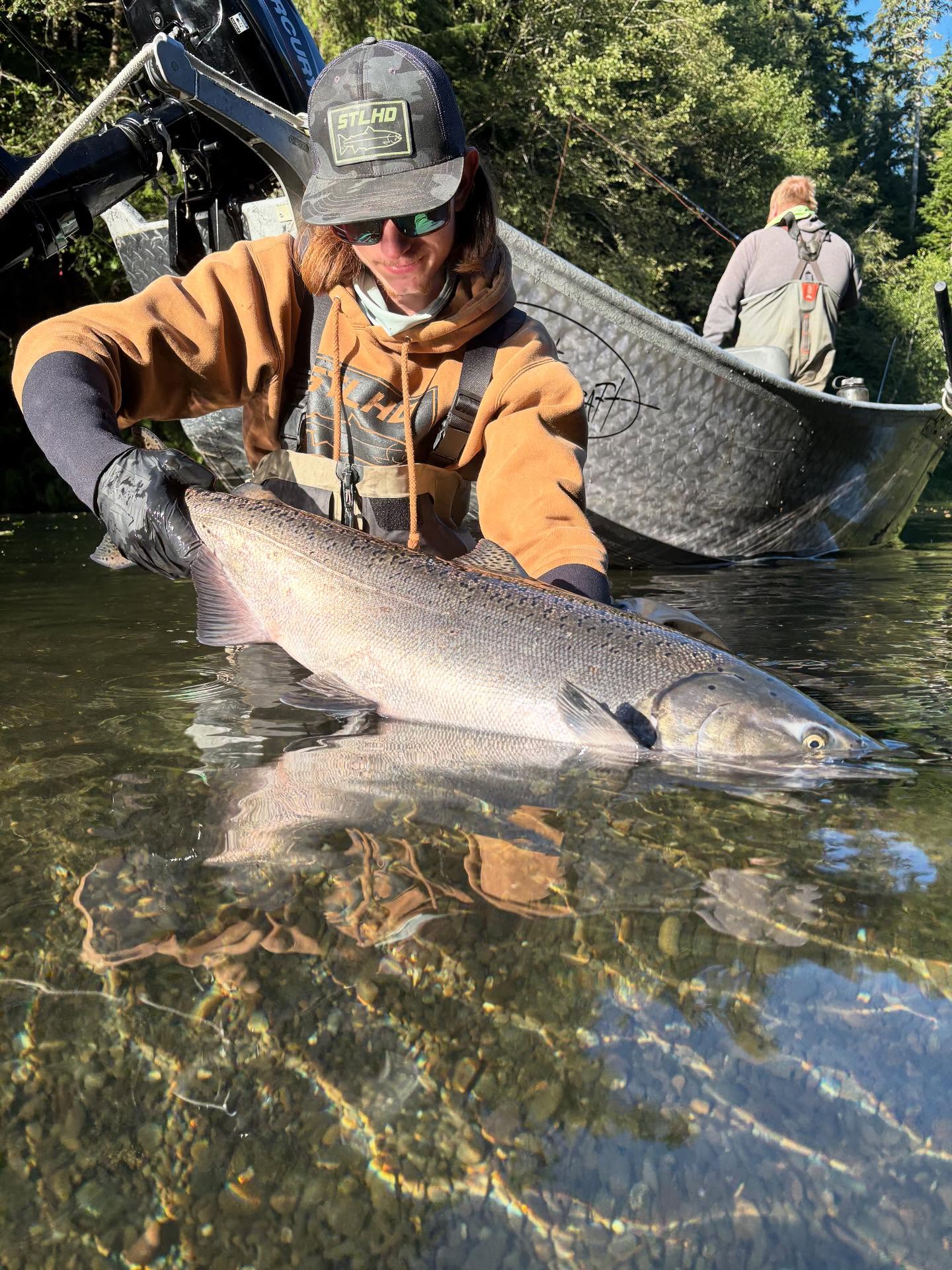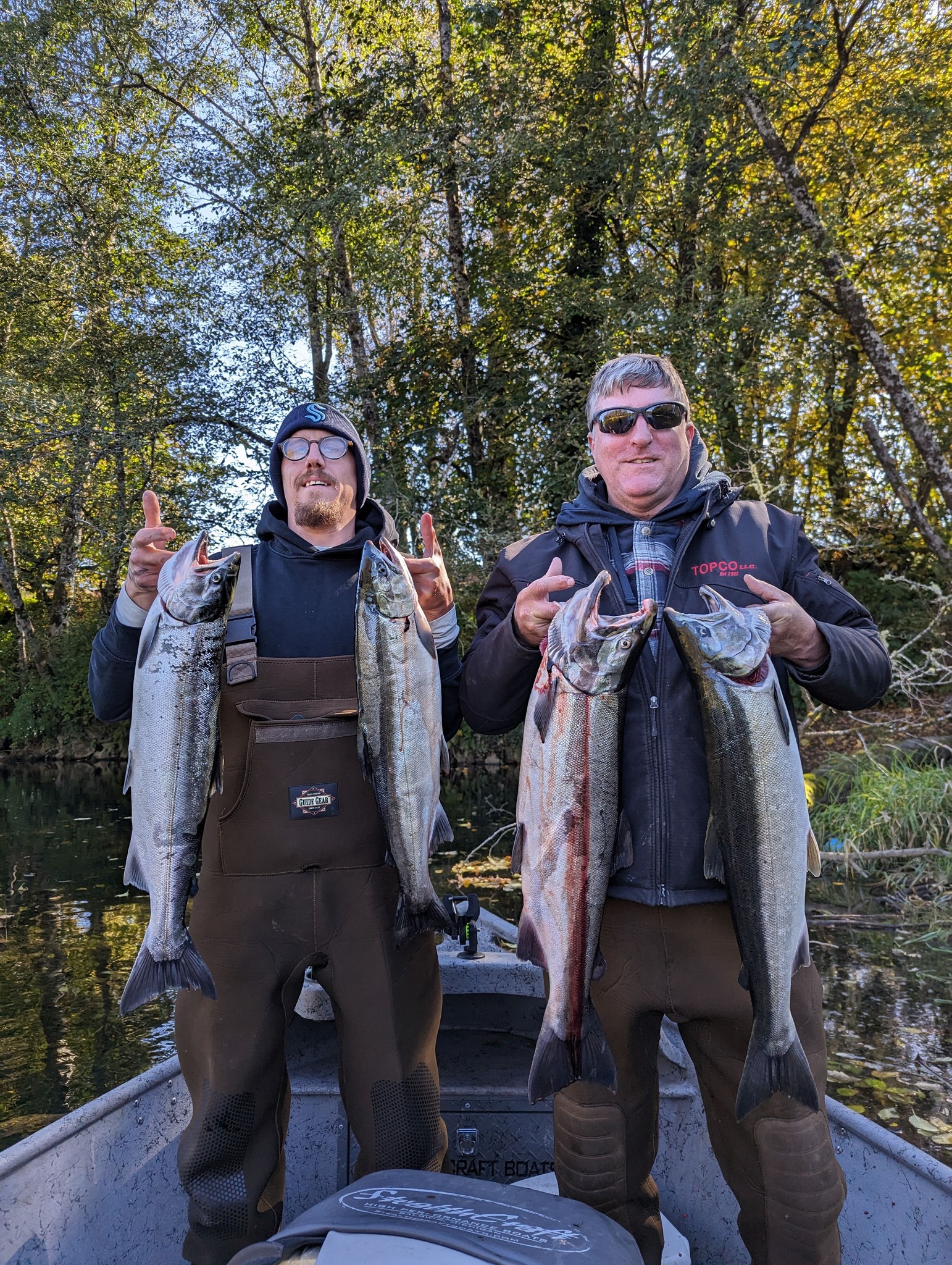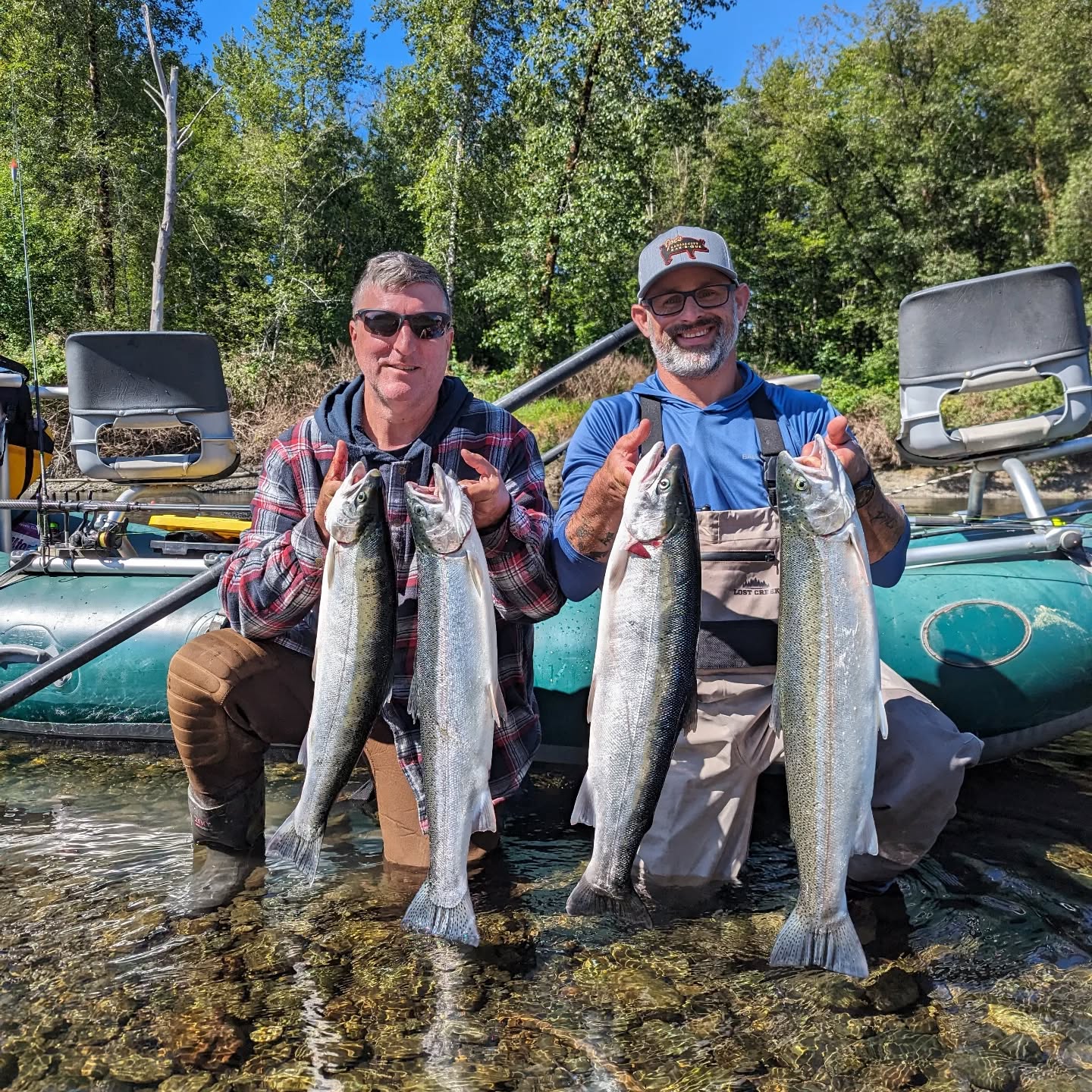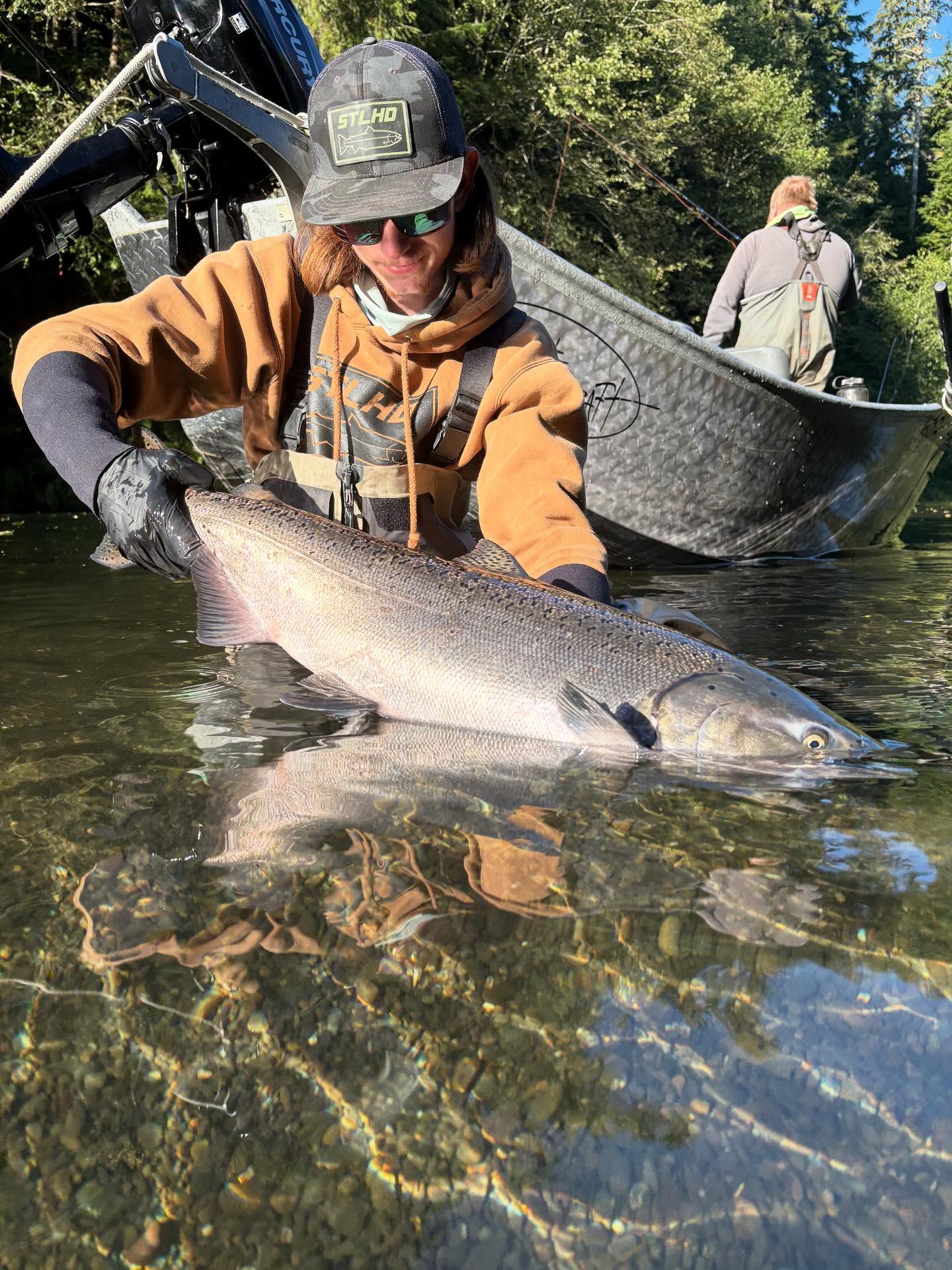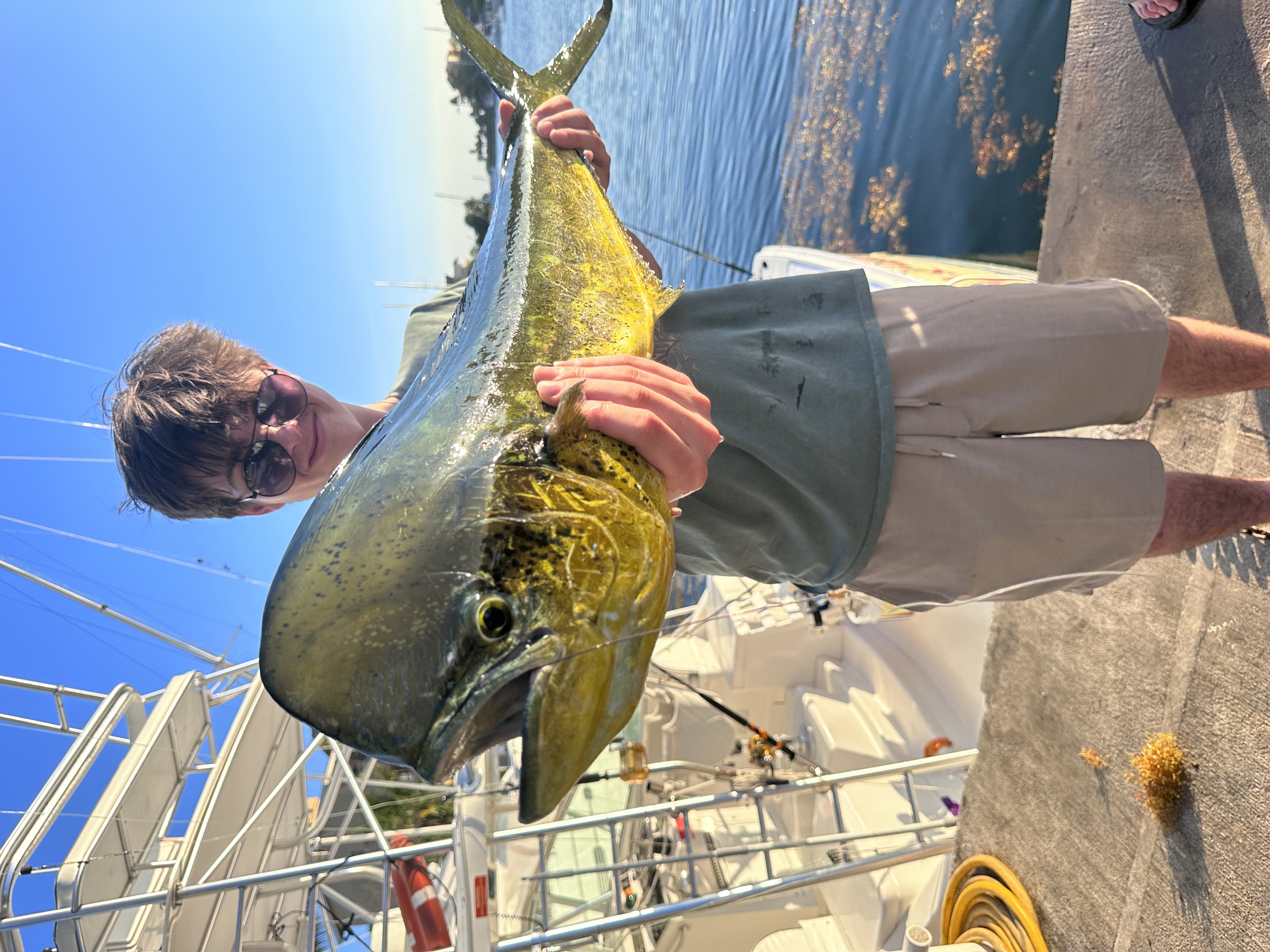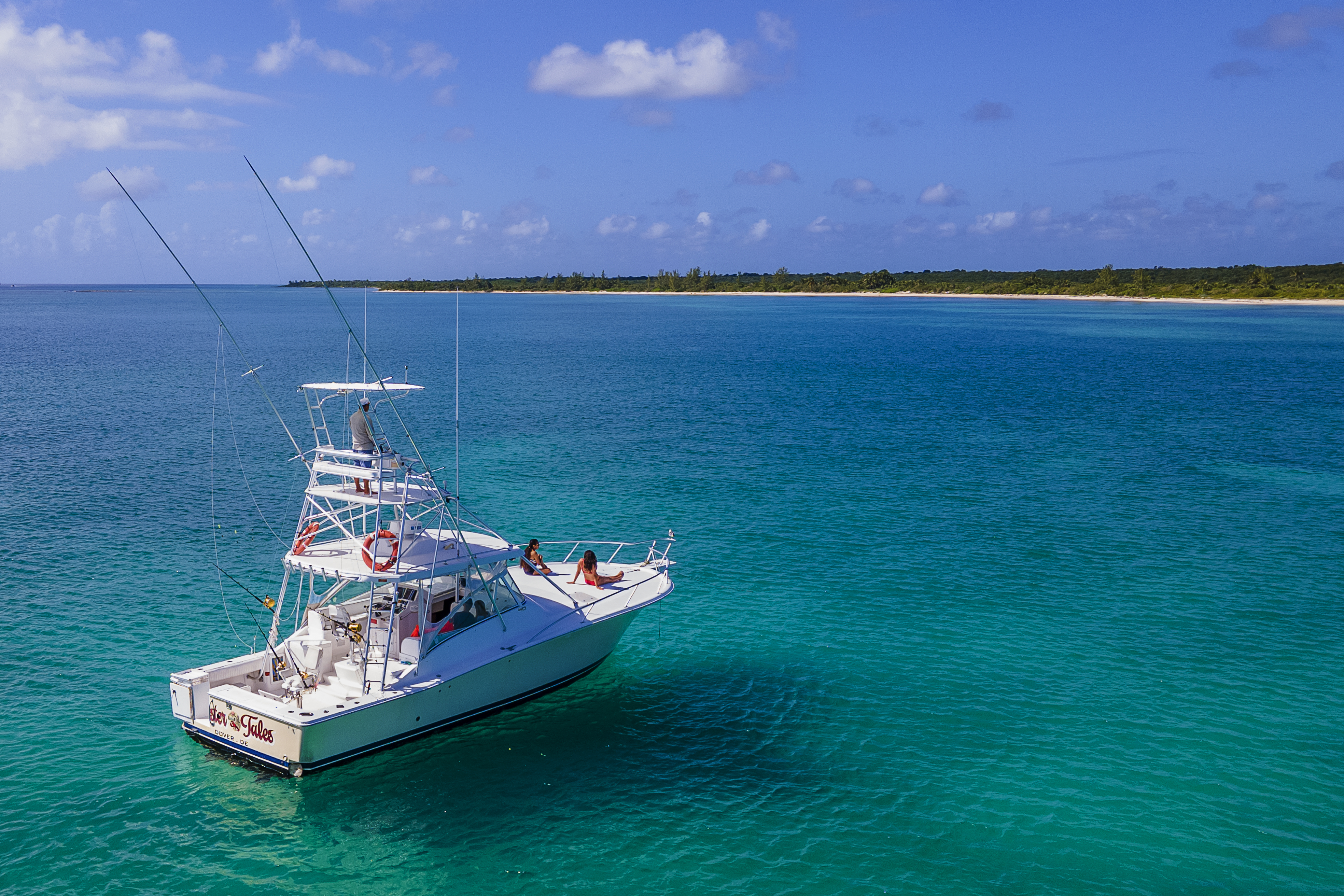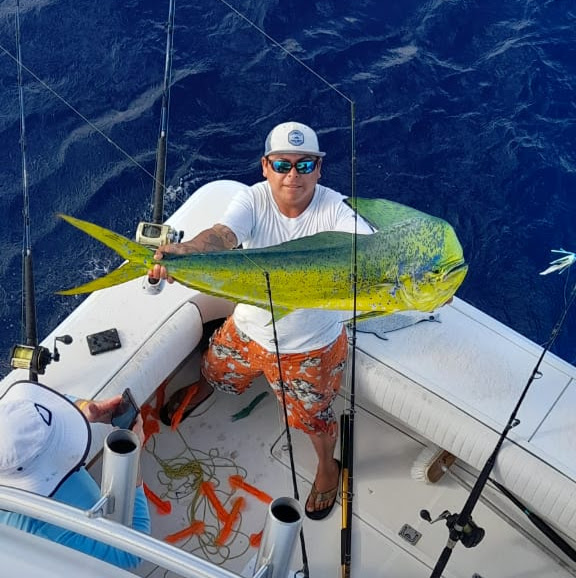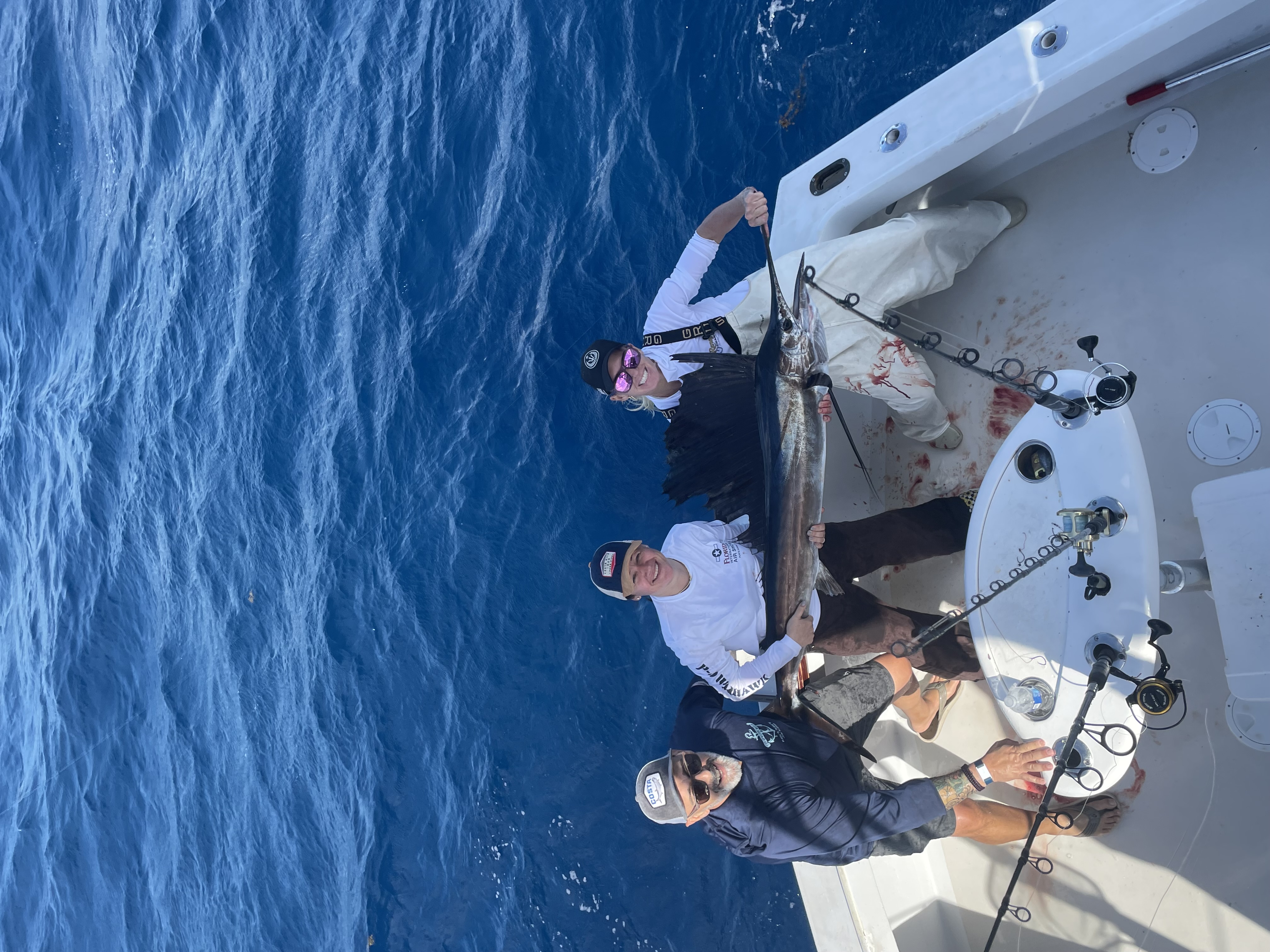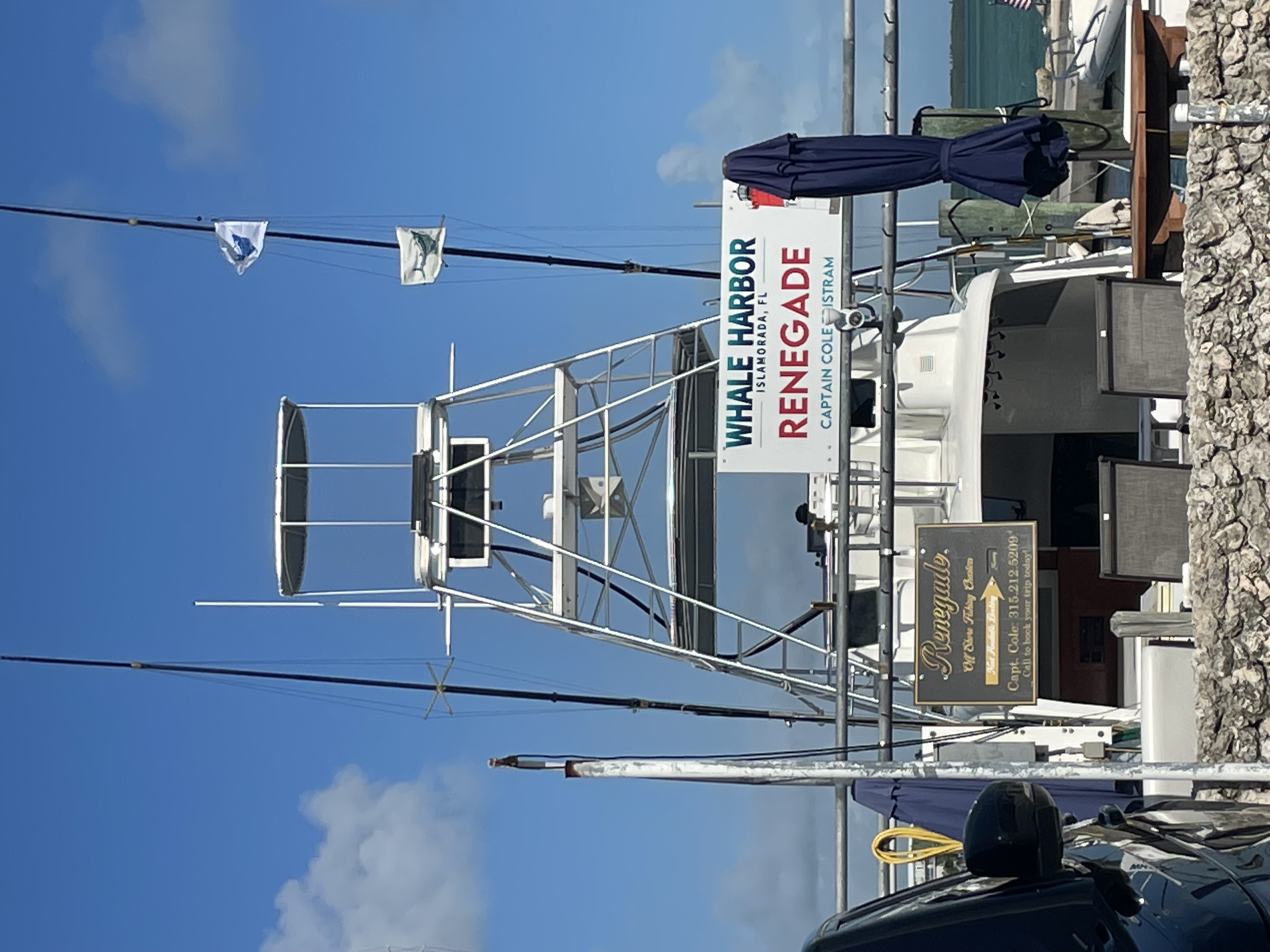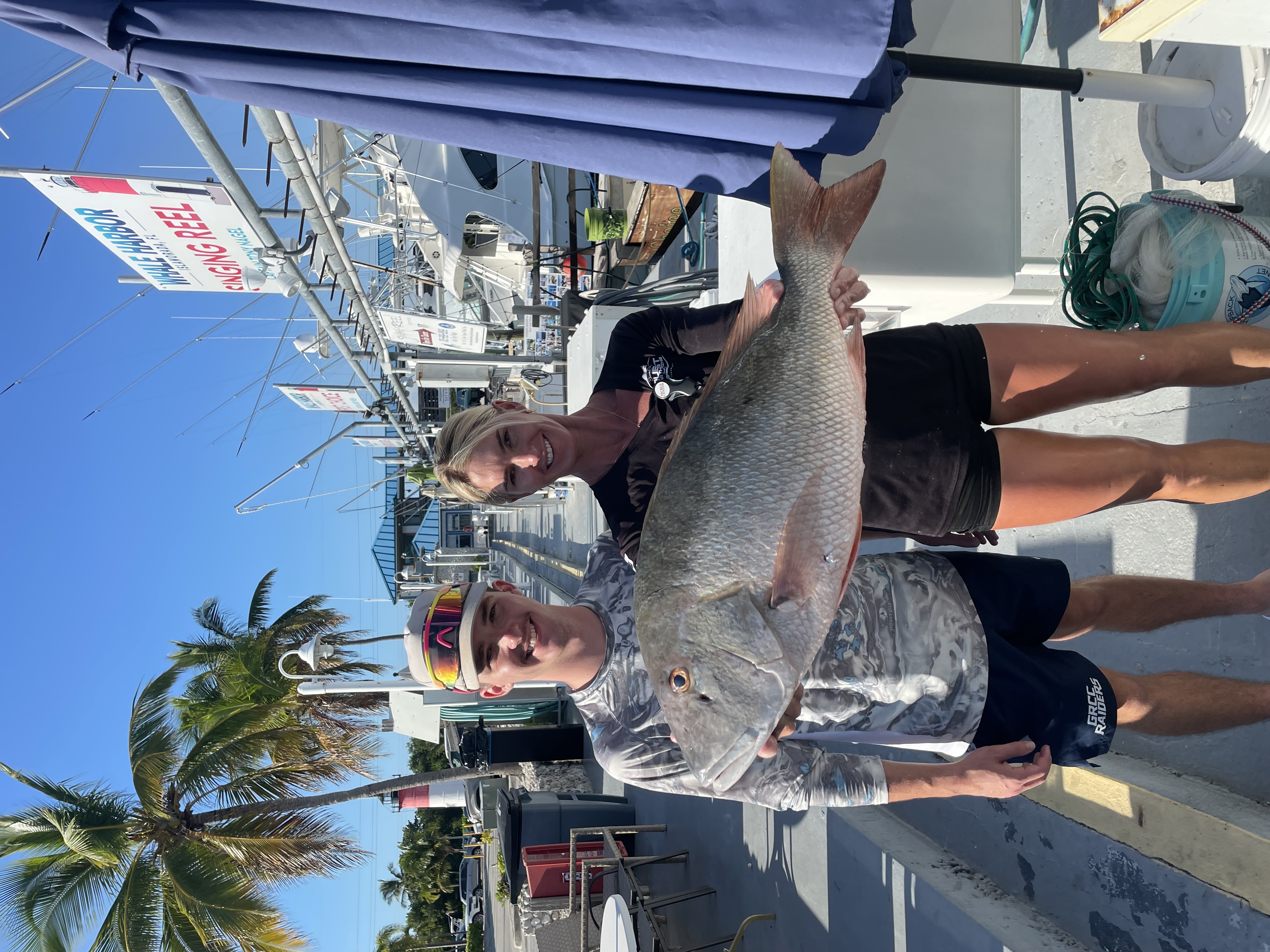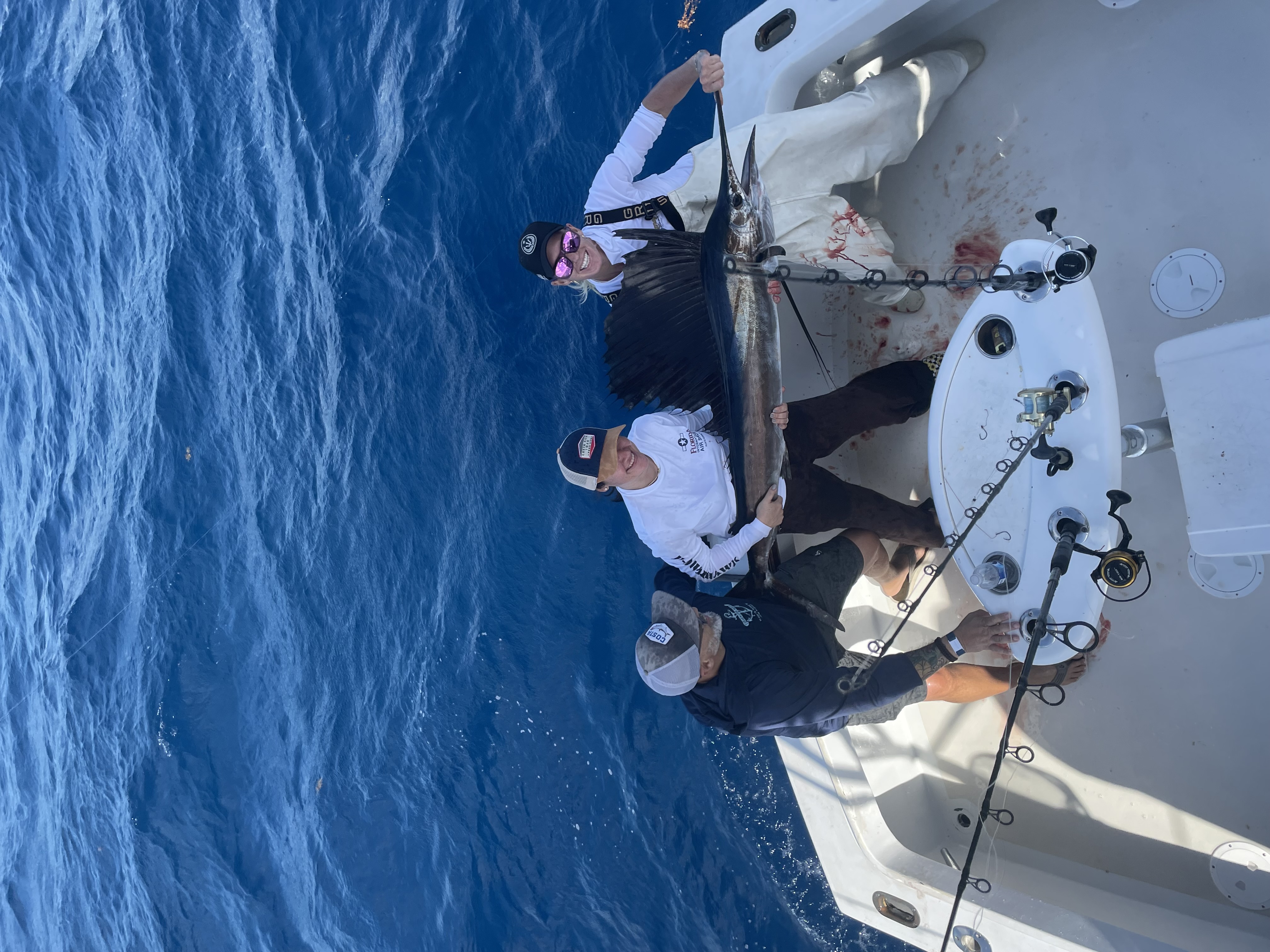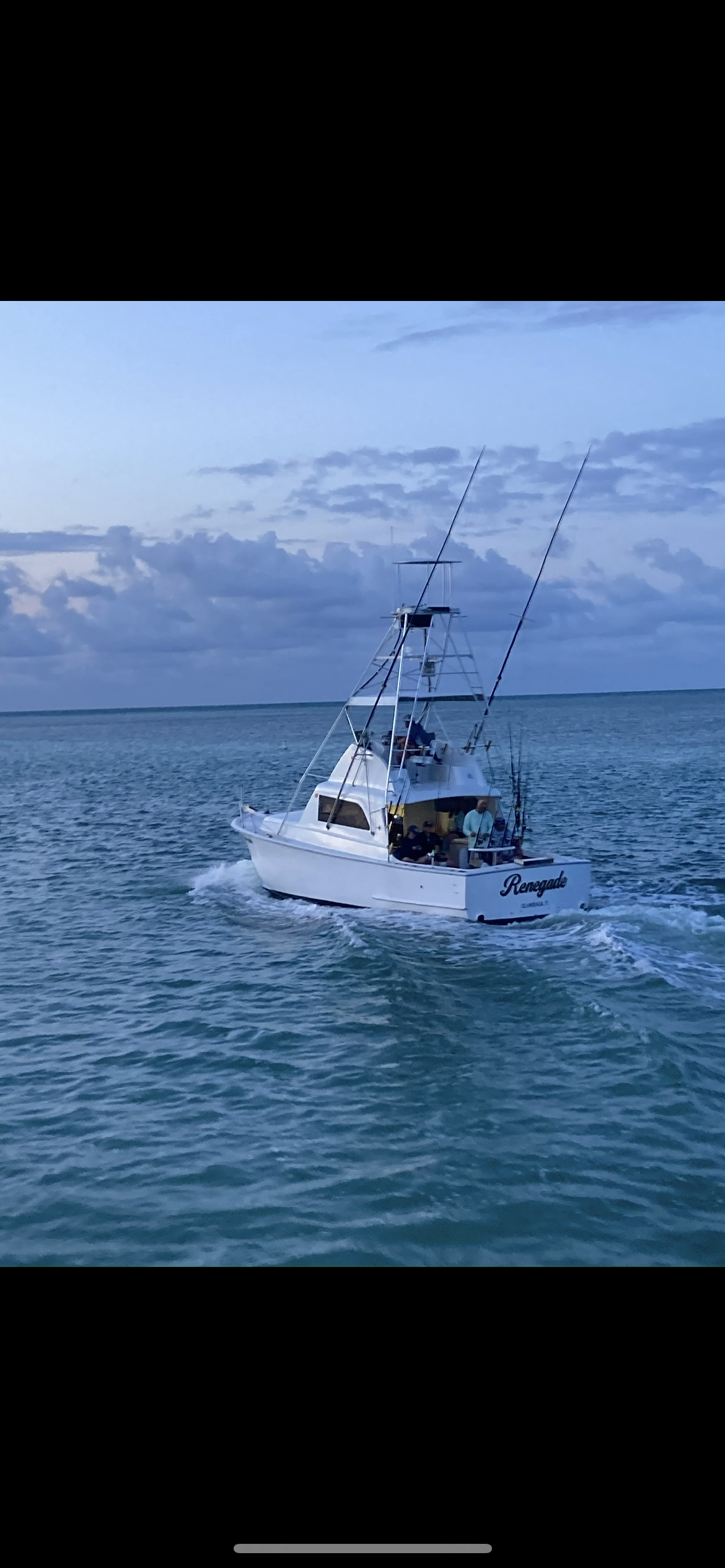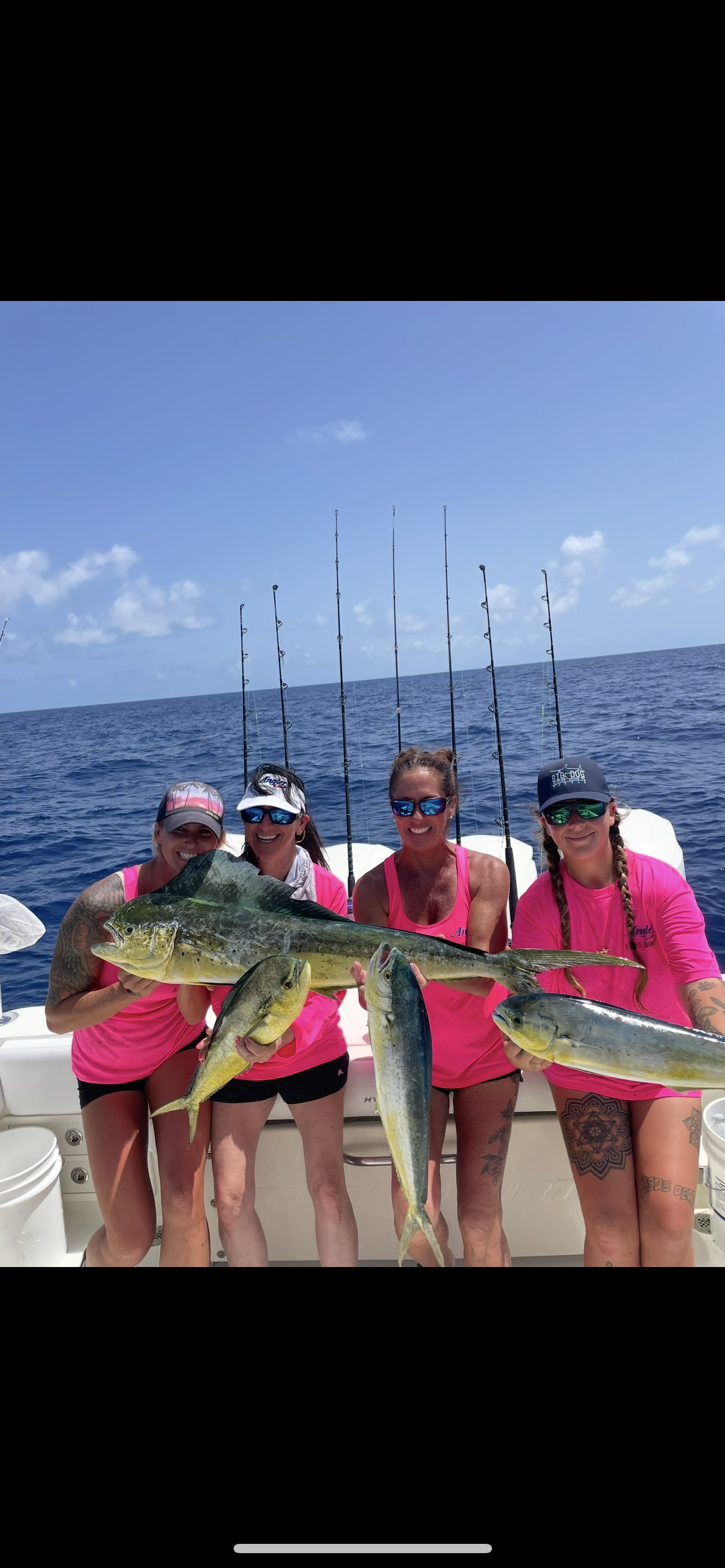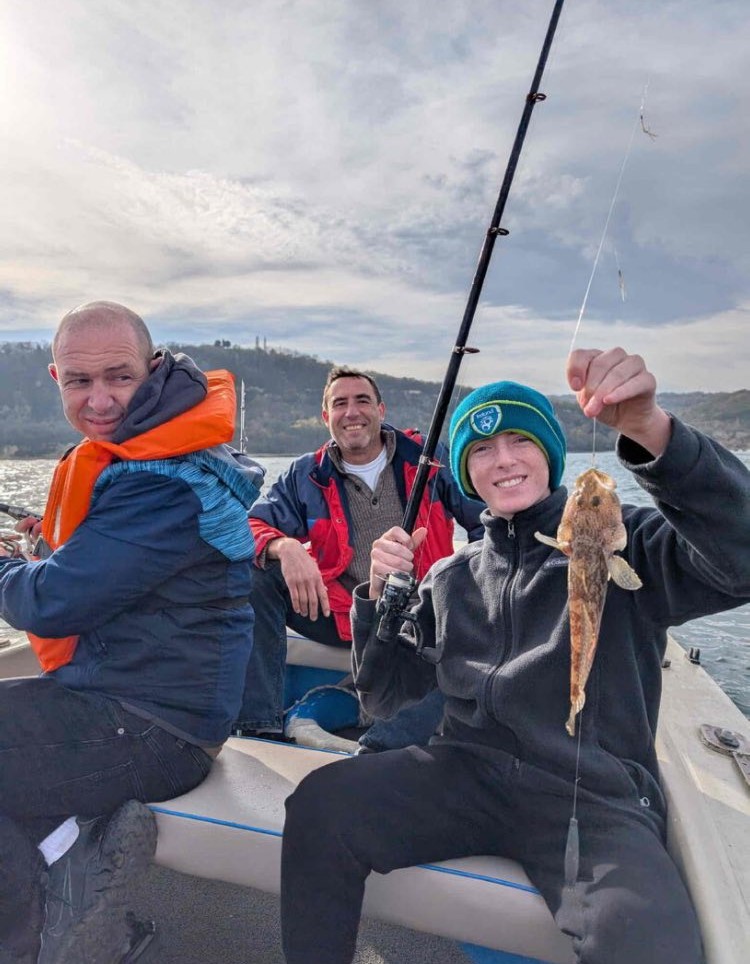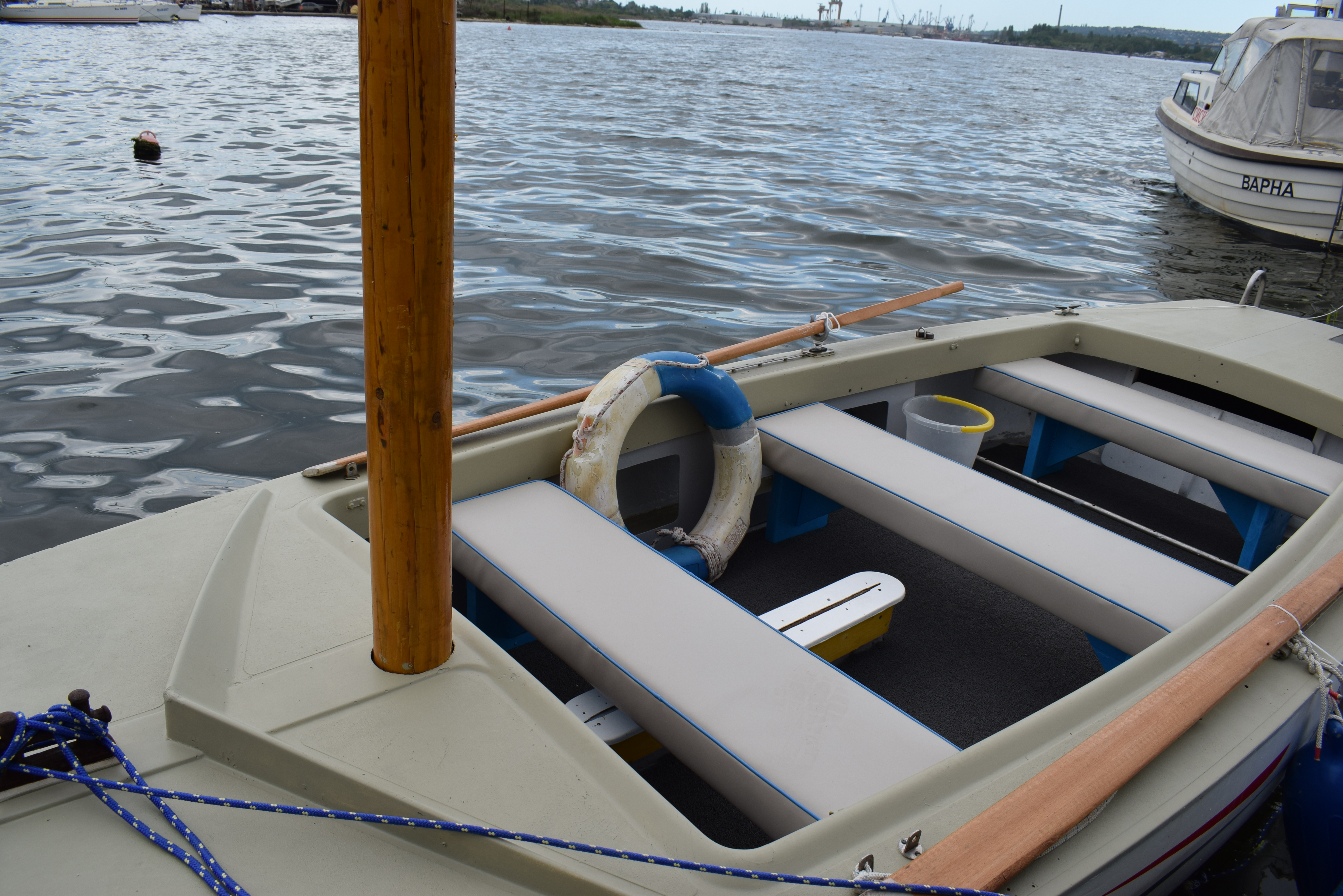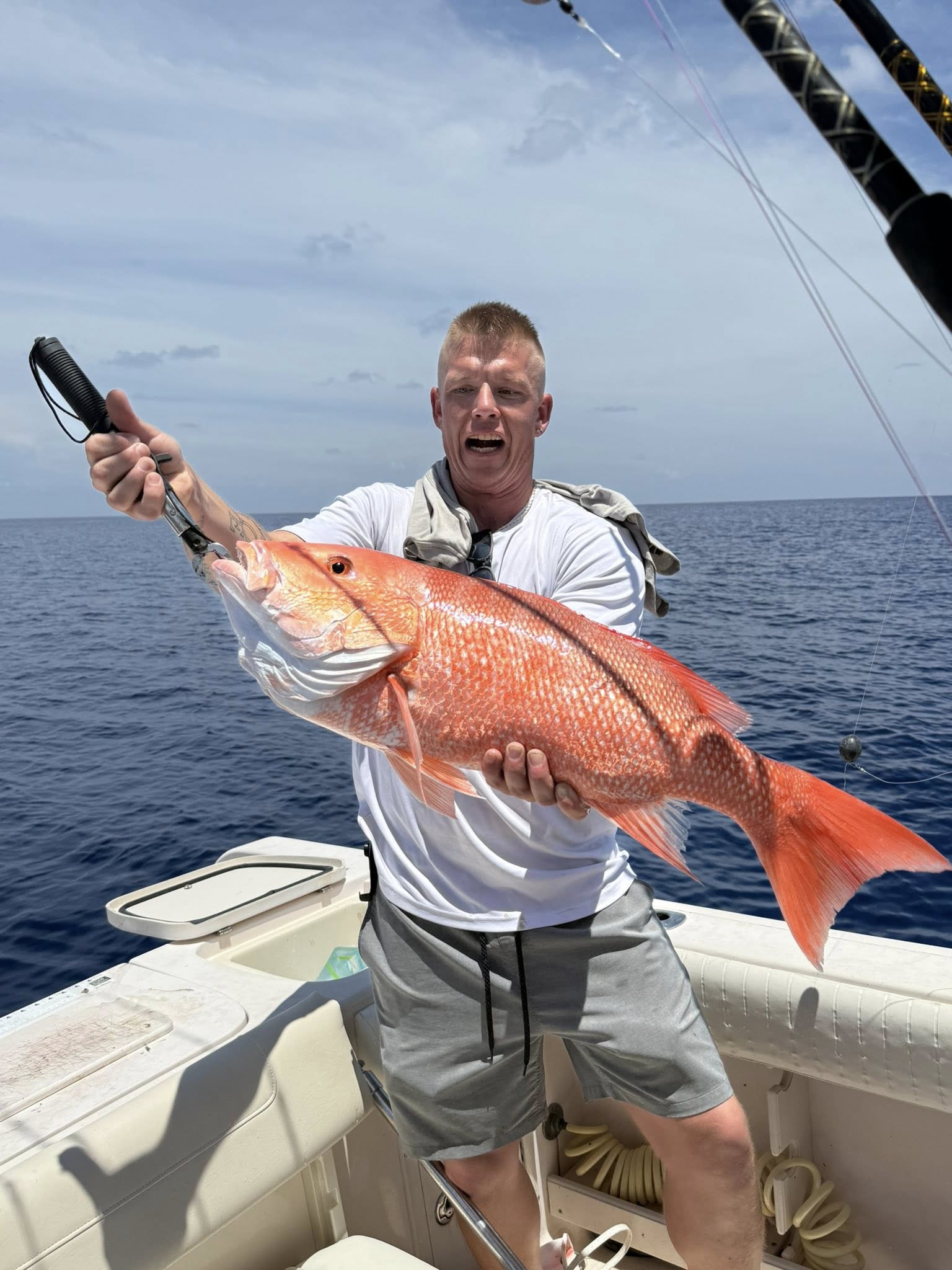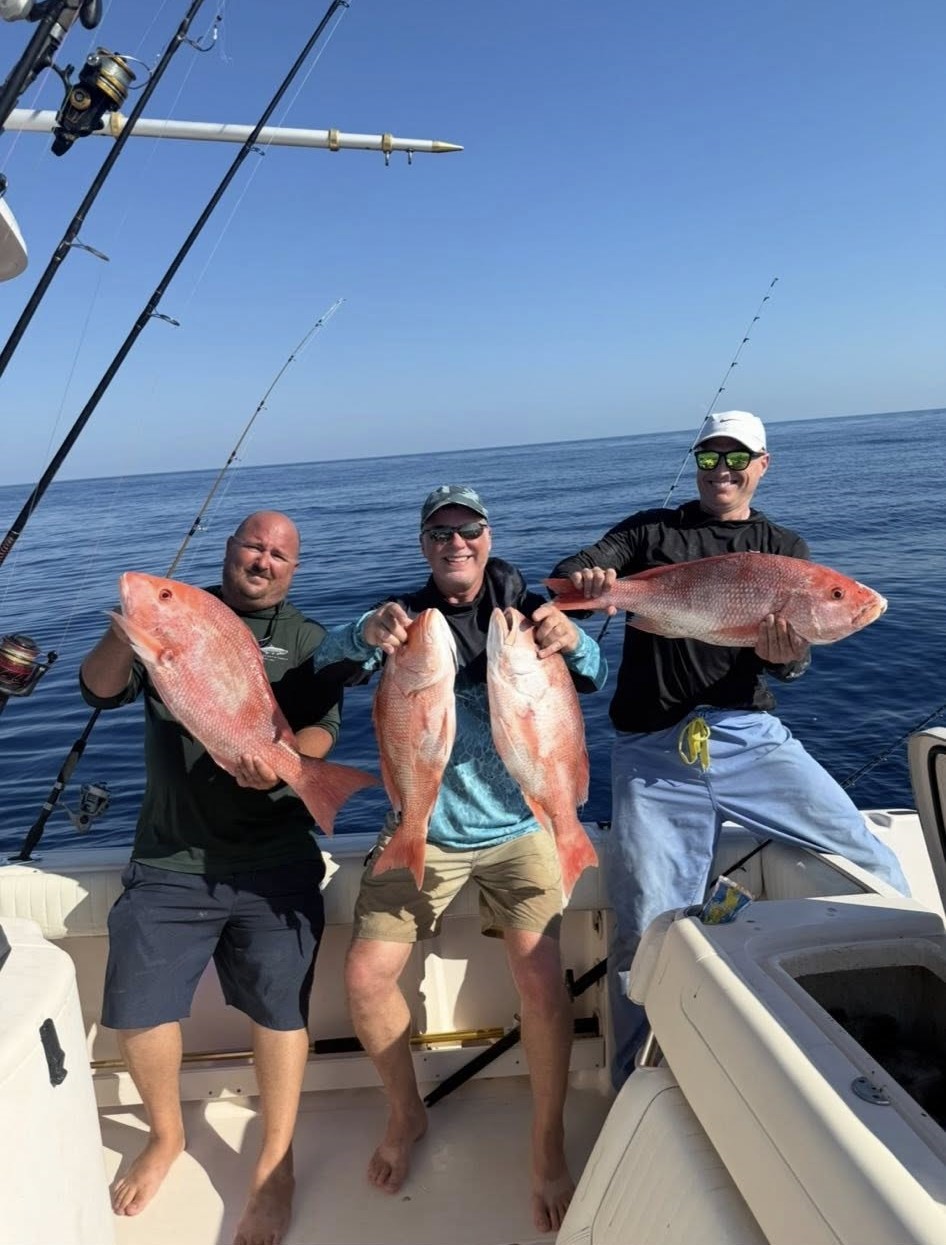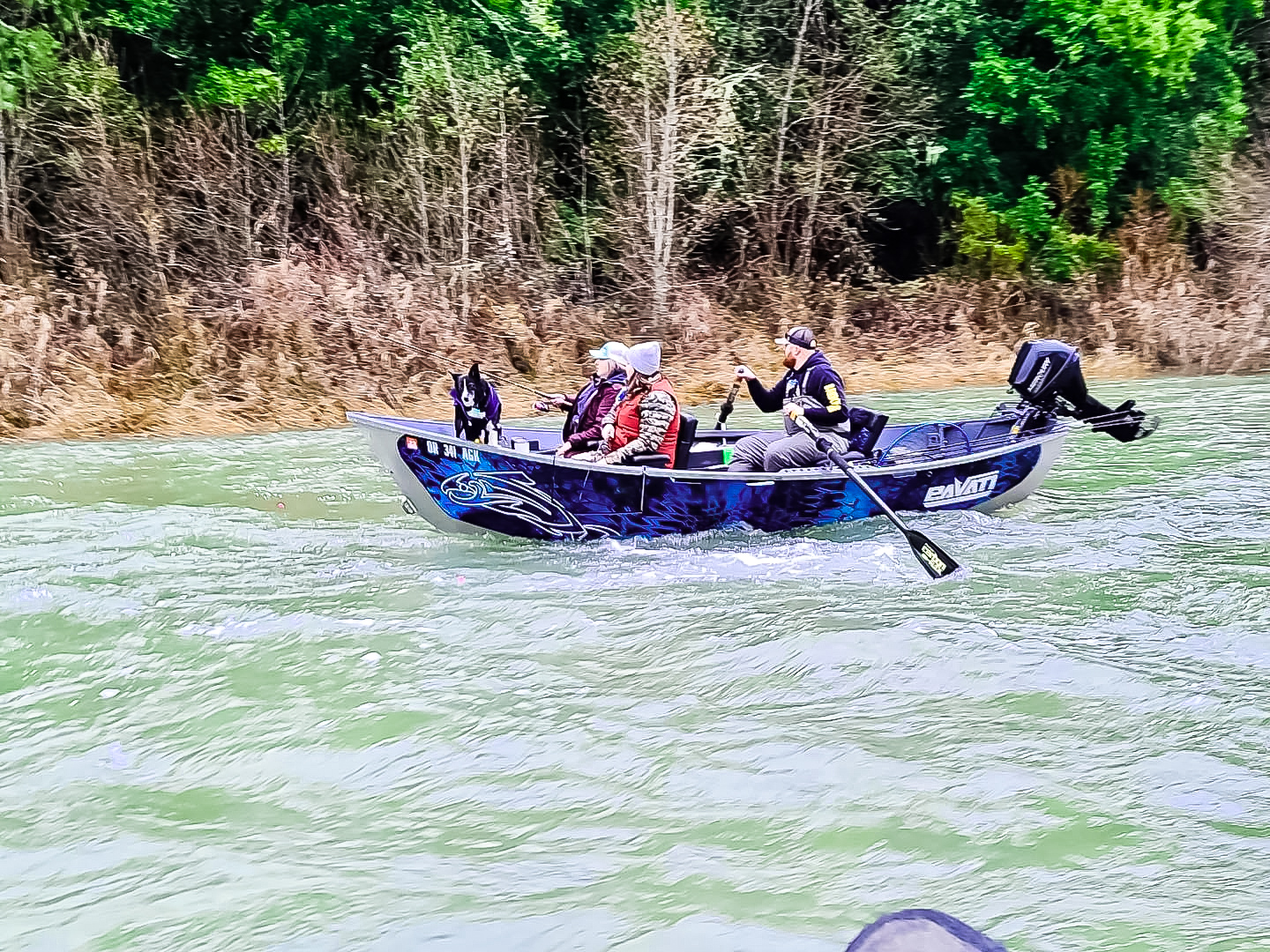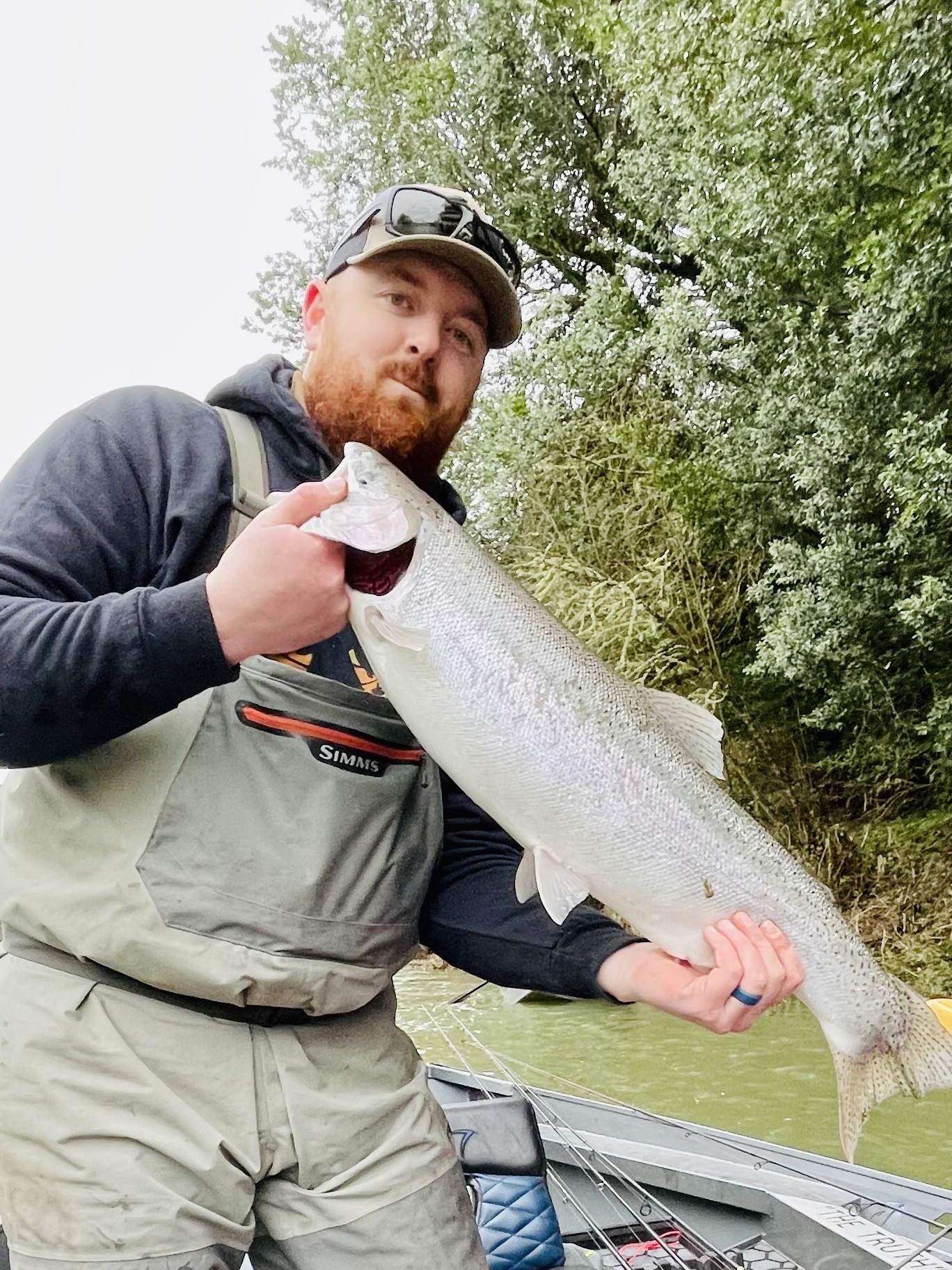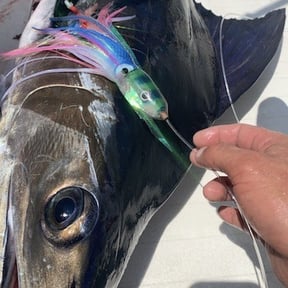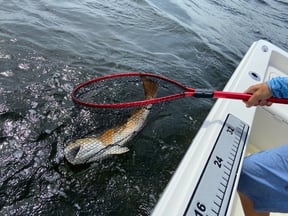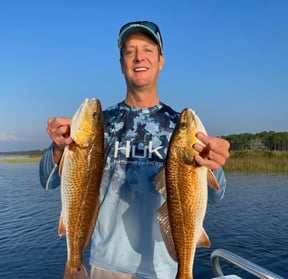Inshore, Flats Fishing in Pineland
Fly Fishing Pineland
Inshore Fishing in Mount Pleasant
Gigging Trip
Salmon Fishing Trip
Steelhead Fishing Trip
Deep Sea, Nearshore Fishing in Puerto Aventuras
Fishing Charter, Puerto Aventuras
Deep Sea, Nearshore Fishing in Islamorada
4 Hour Half Day
Deep Sea, Nearshore Fishing in Islamorada
6 Hour 3/4 Day
Black Sea Trips
Deep Sea, Nearshore Fishing in Sarasota
Red Snapper December Re-Open
Winter Steelhead
We started Captain Experiences to make it easy to book fishing and hunting guides around the world. With over 2,000 Damn Good Guides, our platform makes finding and booking a trip seamless. Head here to check out our trips.
Getting To Know Captain Stacy and Her Audience
I've got some people interested. That’s what I call “fly curious” people. It means you're fishing by other methods and you're kind of wondering what this fly fishing thing is. Fly curious. Yeah, I'm gonna get it on a T-shirt, a bumper sticker, something. A hashtag. I started with fly fishing.
Moving into the Fly-Fishing World: According to Stacy
So those who began with traditionally fishing, and are moving or have moved into fly fishing are what I call transitional anglers. You started fishing by another method, and you transitioned into fly and hopefully, you made the full commitment. Sold off all your conventional gear, gone down the rabbit hole of fly fishing. Maybe not, but that will come, I promise.
Saltwater Fly Fishing: Capt. Stacy and Her Journey
I had been fly fishing for maybe about two years when I endeavored saltwater. To kind of frame some context, this was back before the internet. So my resources were books, VHS tape, (one, there was one), and then a couple of books were saltwater-specific, but there wasn't much. I was in Central Texas, and I have done some trout fishing, and I've definitely done some bass fishing, but I started encountering anglers as we got out of the trout fishing season.
More people were exploring warm water and saltwater. I got to talk to them and got in with some folks that shared some information with me. I was working in a fly shop back then, so that information gathering was readily available.
What I got was a napkin with a map and some information. I borrowed a kayak, and somehow I got it up on top of my old Jeep and tied it down, drove down to the coast, parked at the launch point, and slept in my car overnight.
How to Fish with Heavy Winds
I woke up the next morning to 20 mile an hour winds, but thank goodness, the person that gave me the map, had given me a great map, and said listen, "When you launch the wind is going to be blowing. It's going to be blowing right in your face. Put your head down and paddle, paddle, paddle all the way across the shallow water and get up into the island. Catch your breath, turn around, and fish back to your car."
That was brilliant.
That was the first trip, and I fished about twice a month for seven months before I caught my first redfish. Once I told that story to a young person, he was on the bow of my boat about a year ago and he turned around and said, “So it took you 14 days of fishing before you caught your first redfish?”
How Long Might it Take to Catch Your First Redfish?
I said, "As a matter of fact, that math works." I would say it took me 14 long days out of the black by myself before I caught my first redfish, but let me tell you, I learned a lot during those 14 days and on that 15th day it all came together. I saw the fish. I stopped in place.
I made the presentation, I fished the fly just right. The fish ate. I brought the fish to land. There was nobody around to take my picture. I do not have a picture of that fish, except for the one that's burned into my memory. That was it, I was hooked completely. Saltwater was my thing.
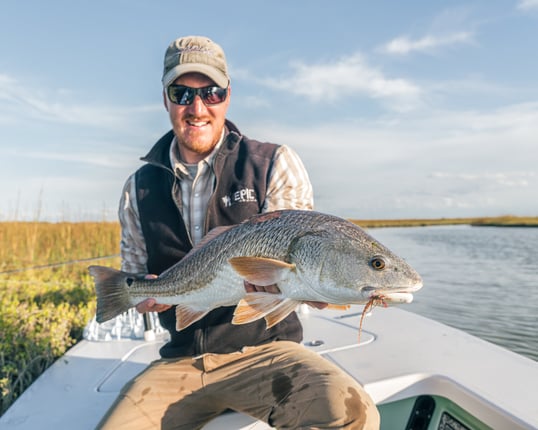
The Upsides to Saltwater Fishing
I love the environment, I love the challenge. I love that saltwater fishing is more difficult to do than a lot of other fly fishing. It's kind of beyond the basic skill set. That's not to say that somebody who's going out for the very first time with a fly rod in your hand, doesn't have the opportunity to catch a fish, but a lot of things have to come into alignment for that to happen.
Saltwater Fishing Goals
It's definitely something that if you've decided on that pathway, which I would encourage you to do, is super, super exciting, but it's a process. For most anglers, when you start out your goal is “I just want to catch a fish.” We want to catch a fish. Then you catch that fish and you're like, “Okay, this is great, this is a wonderful thing. Now I need to catch more fish.” Then, "I need to catch more fish.” Then you're like, “Alright, alright, this is good. Now I want to catch a different species.”
So, you start catching different species, and you're like, “Okay, I'm gonna fish in a different environment.” So, you fish in that environment. It's almost like you change something, you change the seas, you change the environment that you're fishing in, the body of water, or the water type. You regress your back to “Oh, please let me catch a fish.” Eventually, you'll kind of cycle through that one, that first fish and then multiple fish. Then different species and different environments.
Naturally, you arrive at the point where you're like, “Alright, I'm ready to catch a big fish.” The big fish didn't get big by being dumb and being caught a lot. That's the challenge of it. Saltwater [fishing] definitely allows us to do that from start to finish. What certainly helps progress the whole process is to do some other fly fishing along with it. Bass fishing, in particular, requires a lot of skills related to saltwater that you use in bass fishing. So that's always something that you can do when you can't get down to the coast.
Red Fish on the Texas Coast
A primary target with a fly rod on the Texas coast is the red drum, the redfish. They are a wonderfully dynamic species. Redfish can be very easy to catch some days, it seems like you could throw a piece of popcorn out and the fish would hit it, and then there are other days that redfish are more particular than a permit. Permit are some of the snobbiest, most particular fish on the planet in shallow water.
What to Know About Catching a Redfish
Redfish are really, really dynamic fish. I think they're just excessively handsome and wonderful. Whether you catch a redfish that's eight inches long, or you catch a 30 to 40-pound redfish, they're just beautiful fish. Redfish are wonderful fish to target in saltwater.
Primarily what we're doing with a fly rod in our hand, is we're fishing in water more shallow than what you might fish in if you were fishing in a bigger boat, or with conventional gear.
Fly fishing originated as a sport where the originators were targeting large cold water trout. So when I say the word trout, I'm talking about true trout, salmonid species. If I refer to saltwater trout, I'm going to say speckled trout, to distinguish them for what they are. They're not in the Trout family, that's just the name that they have.
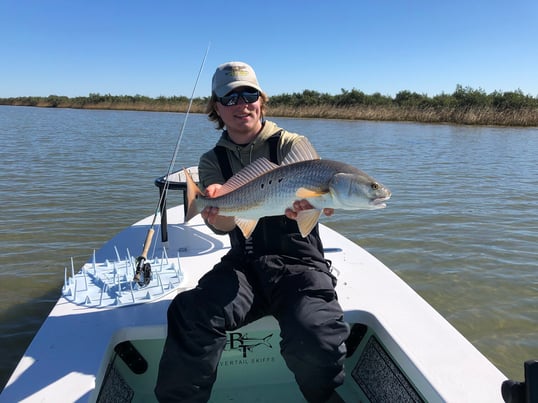
Fly-Fishing Lures: What to Use and What Do They Look Like?
The originators of fly fishing were targeting cold water trout that feed primarily on aquatic insects. So when we create a lure to mimic what fish are eating, with the way that flies are designed, we can create a lure that is so much more realistic, including tiny, tiny foodstuffs. When we create a mayfly adult or a caddis fly larva, which are tiny comparatively, then the equipment needs to change.
In conventional fishing, you have a lure or bait, and it has weight or mass associated with it. You have it fairly near the tip of your rod, you draw your arm back, and you push the butt of the rod forward. The action of you pushing the front of the rod forward, and the weight of the lure on the other end, causes the rod to bend.
Conventional Fishing with Loaded Rods
We cause that rod to bend, and then at the end of our casting stroke, we stopped the butt and the tip of the rod unloads, and it propels the weight. In conventional fishing, it's propelling the weight of the lure and the lure goes out and pulls the line along behind it.
When you're talking about a fly lure, that is imitating a small aquatic insect or small foodstuff, that's not going to work. In fly fishing, the fly line is the mass or the weight that we use.
Knowing Line Weights
A standard red fishing outfit is a nine-foot-long rod, the size of the rod is called an eight-weight. That term doesn't mean anything, it doesn't weigh eight ounces or eight pounds. It's not going to catch an eight-inch fish or an eight-pound fish. It doesn't have anything to do with test poundage, it's just the number.
The scale of line weights runs essentially from zero to 15. The concept is that as you choose equipment of larger and larger line weights, the rod and the line combined help you develop enough load to propel the size of the fly that you want and need to be casting in the condition that you're casting it.
Advantages to Fly-Fishing
Notice I didn't say anything about the size of the fish. Fly fishing is the tackle method to target very large fish on very, very small lures. That's what fly fishing is designed to do, that's how it originated. There are a few other advantages to fly fishing. When we create those lures, we can create a massive lure that has virtually very little weight. We fly fish for all species in almost all conditions.
There's a woman that lives here in Houston, her name is Meredith McCord. She is a very, very passionate angler.
She lived a couple of blocks down from the fly shop that I had and ran here in Houston. A couple of years ago, she was starting to collect world records. She's now up to 220 world records, most of those were on the fly. Recently, she's been down targeting billfish with a fly rod. Even a fly for a very, very large species like that, a very, very, large fly, has very, very, little weight to it.
Transitioning from Conventional Fishing to Fly-Fishing
The weight that you're casting is the weight of the length of the line that's out the rod tip. So the casting in it itself is different from what you normally do with a conventional rod. I always let people know there’s going to be some things that [they’re] going to connect with when [they] transition from conventional [fishing] into fly [fishing]. Then there's going to be some things where they need to just let that certain habit go.
There’s nothing you've done in your life that prepares you for creating a cast that moves the weight up and away in a backhand motion. Some of the young people sometimes will debate with me about lacrosse passes. There's maybe a few similar motions with that, but even a backhand in tennis is a forward motion. There's some things that you'll have to re-learn. Then there's some things that you'll have to learn brand new in order to be a successful fly caster.
Standard Red Fishing Rod
A standard red fishing outfit is a nine-foot-long rod, eight-weight. The term nine weight refers to both the size of the rod and the size of the line. As you choose to fish with a fly of a larger and larger size, then you'll probably be going up the line weight scale.
You can still catch a very, very, large fish on a lightweight tackle. You just have to be a great angler in order to do that. Your saltwater equipment has to be able to withstand a pretty harsh environment. It's generally a little bit more involved, maybe a little bit more expensive than what you might be able to utilize in freshwater fishing. For the most part, we are talking about some bigger game fish, harsher conditions, that kind of thing. The equipment needs to stand up to that.
Essential Fly-Fishing Equipment
The other essential equipment in fly fishing after you have your rod, reel, and line, there's a connection between the fly line and the fly lure, it’s called the leader and it also has some material called the tippet.
The leader-tippet combination that I use a lot, I either purchase or build out the main leader section which is a monofilament that’s six to eight feet long. Then I'll add a foot to two feet of fluorocarbon tippet. I just like the way fluorocarbon performs with a bit of an advantage, especially in clear water. With wet flies, when I switched to fluorocarbon tippet, probably about 12 to 15 years ago, my catch rate went up. That was pretty significant and made a big impression.
I would say that, in general, my leaders will taper down to somewhere in the 12 to 20 pound range. Unless I'm targeting some super oversized fish, I'm probably going to go down to 30 pounds. My base leader is something like 15, 40, or 30. Then I'll put some 20 pound fluorocarbon tippet onto the tip for the slot size redfish and then the size of the flies.
What Do Redfish Eat?
With that equipment, I'm able to cast the size of flies for the species that I'm targeting. Redfish eat other fish, baitfish like shrimp and crabs, primary foodstuff. Anything, almost anything in saltwater. We're not really imitating any type of aquatic insect, but we are imitating those main prey foodstuffs.
Most of the flies that I use are actually on my boat or in a box that I call the bone pile. Those are the ones that have been cut off, switched out, and dropped down into a box, rather than putting them back in the box. My boxes are all labeled which makes them a little easier to grab when I'm on the run.
I tend to fish flies that are very natural in color. This is different from what I fished 20 years ago, where we used to fish a lot of really flashy patterns and flies with a lot of colors.
I think our redfish have really gotten an education. I'm looking for flies that are very, very naturally dyed, a lot of tans. It's like death by khaki in my fly boxes: tans, whites, maybe a little bit of grey, a little bit of pale pink, maybe a little bit of chartreuse, a little bit of olive, kind of depends on the pattern.
Using a Black Fly
The other primary color in my fly box, [is] black. Black doesn't look like anything except the shadow of something. We use a black fly when the quality of life is low, or just the quality of water is not crystal clear because the fish will react. Like you, the fish will react to a profile or a silhouette. They'll see it better when it has some contrast. The kind of approach to figuring out what fly I'm going to choose is I'm looking at water depth, and water quality.
By water quality, I mean; is it crystal clear? Or does it have a little bit of murk to it? Or is it dirty? Then I'm also going to consider the bottom color. So if the bottom has a lot of sand to it, I'm probably gonna be a little bit more inclined to fish a crab pattern because of a crab's sand habitat. Knowing this species and kind of knowing what's available to them and the area is essential for picking out the right fly, but it's super simple.
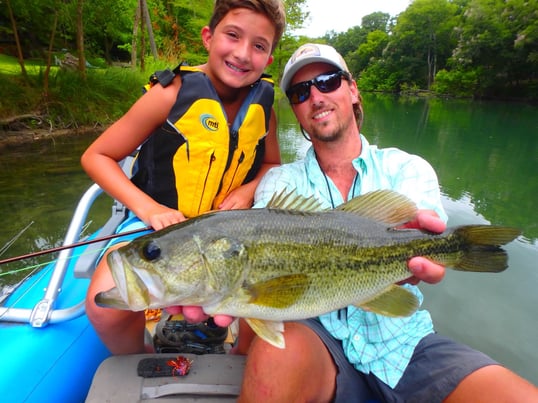
How to Pick out the Right Fly For Redfish
We're primarily talking about three different foodstuffs. It's not like we're talking about 18 different types of mayflies, like in freshwater and batch in the hatch and, and all of that. What I know about our primary target redfish is a well-fished fly is more important than the color or the pattern itself. If you know how to feed the fish and you understand how the fish is reacting to your fly presentation, you're going to hook up with more fish. That's the great thing about redfish.
If the redfish refuses to eat in a situation where you feel like you've fed it, well, then you can look at switching up your fly pattern. I usually start with a fairly generic fly pattern for the day. Then I'm judging: alright is the sky sinking at the right depth because redfish really is for flies, which are not scented. Except for some patterns that don't create a lot of disturbance within the water, redfish really have to see it in order to be stimulated to eat.
You need to notice how small a redfish's eye is. If you look at pictures of really big redfish, it's like their heads get bigger and bigger, but their eyes have stayed the same size. I'm convinced that redfish do not see well. The bait really needs to be within their sight, which means fairly close. The other thing is that their eyes are located very low on the sides of their head, and their mouths are low there too. Redfish are designed for feeding off the bottom, but redfish do feed within the water column. Then they also will feed on the surface.
Has anybody caught a redfish on a popper? Just super fantastic, fun. There's some videos going around of some of the big redfish over in Louisiana, the guides kind of teasing them and playing with them with topwater poppers. That's super exciting and fun. They will see within the entire water column. You kind of have to figure out where they're going and where they can hit on that particular day. The main thing is getting it in front of them. Accuracy, as far as casting skills is concerned, is the most important thing about your fly casting effort.
Catching a Fish on the Fly
To catch a fish, you have to put the fly on target. A hula hoop, to me, is too big of a zone for a lot of species. Really, you should be practicing targeting something that's about a dinner plate size, and then work to put it right in the middle of the dinner plate. Accuracy is the most important thing, way more important than distance.
There are other saltwater species where distance becomes an important part: bonefish, permit, tarpon- much more important.
Fly Fishing With the Wind
There are days when distance is really important for red fishing, those happen to be the days when the fish are really, really spooky. This tends to fall on days when there's no wind, or very little wind. I know that on windless days a lot of people would like to downsize their equipment. Well, those are the days you need to be able to make 60, 70, 80-foot casts because the fish can see us from such a greater distance. We can see the fish, but they can’t see us. A lot of times in that condition, I'm going up a line weight.
I'm going to fish with the nine weight on a windless day because I don't like to be under the gun, I always like to be able to double over the fly, and at any particular distance. I think, as far as casting is concerned, the thing that's really engaging and exciting about it is that redfish can appear at just about any distance from you or from the boat at any angle.
Those of you that may have read some old-school fly casting books know that you're going to make a cast if you're a right-handed caster. And 12 o'clock is right between your toes, so you're going to be casting to 10 or 11 o'clock, 30 to 40 feet all day long. Then you're going to miss the fish that are 15 feet at three o'clock. The thing about that fish is if you're on your right-hand caster in your own poling skiff, and you can't turn and make this cast, you can't cast over the boat.
The skill set then becomes very dynamic, you're dealing with the wind, you're dealing with fish showing up at weird angles, the boat seems to always be in your backcast. We have to learn some [skills] beyond the basic skills. We don't always have the opportunity to put the boat in the perfect position for the caster. We need the caster to be able to make the cast from the position where they are from where the fish is.
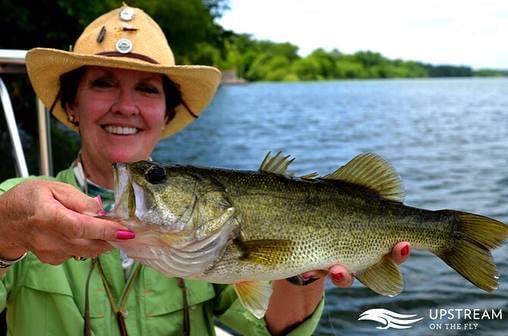
Most Important Skills to Know While Casting
I'll talk a little bit about a couple of those casting skills that I'd like to see people practice. A great thing, [for] somebody who's just trying to figure out whether or not this is something that they want to do, [is a practice rod]. There are a couple of different brands that make a little indoor practicing rod. I like one because [with] a real fly line, which means that I can use all the same techniques that I would use on a large, regular-sized fly rod.
Some brands use yarn, and you can't do as much with the yarn. The thing about these rods is that you can use them in the driveway, the hallway, and you can practice your technique.
Actually, if I look down this rod, and I put the tip of the rod on a crack [in the floor], and I move it in the right manner, using the appropriate fundamentals of fly casting, then I'm able to control the fly line to its full extension. Then it unrolls at least parallel to that line. What I'm trying to avoid when I practice this is something that looks more like a rainbow.
Movements to Avoid While Fly Fishing
We want to avoid something where the tip of the rod looks like a windshield wiper, or it's moving through a rainbow. This creates a shape in the line, which we call the loop, a big wide-open loop. And this big wide-open loop has lots of challenges and problems. One is if you make a wide loop on your backhand cast, it's probably going to hit the water. When it hits the water, it makes a sound. It doesn't matter if it's away from the fish, the fish can still hear it, so that's not good.
We certainly wouldn't want the rod to hit the captain. Then if we come around, and on your forehand cast, assuming your forehand cast is the presentation cast, the one that's going to deliver the fly to the fish, then what you've got is a loop shape that's not very aerodynamic. The whole time that this wide loop is in the air, the wind is blowing it around.
It's very difficult to get a wide loop to achieve any accuracy. The other thing that happens is now on your presentation cast the line hits before the fly, here again, making a sound. The other is oftentimes, most of the time, a wide loop is not going to fully extend the line and straighten the leader. Here again, your fly is not landing where it needs to.
Let's say the line goes out, and the fly lands in the middle of the pile, you will get to see a fish come up and push all the extra slack line out of the way in order to grab the fly, that's just not going to happen.
How to Achieve Full Extension of a Fly Fishing Line
What we're looking for is a full extension of the line. To achieve that, we're going to create a different loop shape. One thing about a little practice rod, is you have to be better at it than a real rod.
Now, the manner that I move the rod tip, it's not going from nine o'clock to three o'clock, it's going from ten o'clock to one. What that does is it changes the loop shape. You should start to see a loop shape that looks more like your pointed finger. Or, oftentimes, I'll refer to it as being bullet-shaped. We call it a tight loop, because of the legs of the loop. The loops are closer together. They're tight together. Now I can aim for it.
I can aim that fly now. The other thing that I try to encourage casters who are starting in the practice field is to practice what I refer to as a fly first presentation. For those of you that have done freshwater fishing, and you've gone to the Rocky Mountains or Canada or the Northeast, you've probably done some trout fishing where you're drifting flies. When your flying line is on the water, it's gonna have some slack in it, because you're trying to get the fly to move unimpeded in the current. This slack helps eliminate drag on the fly.
Manually Moving the Fly For Saltwater and Bass Fishing
However, in saltwater fishing and bass fishing, when we're using what's called a streamer, and trout fishing, we're going to have to move the fly manually. We need the line to layout nice and straight. Then the other thing that I encourage people to do is to try to create a cast where the fly is going to be the first thing to touch. You stop, watch the loop unroll, and hope it's a nice tight loop.
Then when you see the fly hit, you drop the tip right down to the surface. If you time that ride and you've had a nice tight loop, the fly is the first thing to hit, that's the only sound that's made, not the mass of the fly line hitting. Then once the line is applied to the water by dropping your rod tip down, you're ready to fish.
Fly Fishing Techniques: What to Do Once Your Line is Set
When the line is in contact with the water, the wind has less of an effect on it. This means you might need to use some creative skills. A high wind situation is like when you've gone out wake fishing and the winds picked up throughout the day and now it's into the afternoon and there's still some fish around you. You still want to fish but you've got to walk back to your car. Utilizing even a skill like hole casting keeps you fishing because the line is anchored on the water.
The Water Haul Technique
There's also a technique called a water haul. You can use a water haul on a boat. Again, you have to keep the line moving on the outside of the boat. With the water haul is I need to present my fly over in one area, but the wind is really howling, pushing my threshold for fishing successfully. I've caught fish when the wind was blowing 32 mph. It wasn't fun but it did happen.
I pushed that limit, I keep pushing that limit. That's what it's all about. What I might do is lay out my backhand cast. Now it's on the water, it's not in the air getting blown around, lay it out. You want to make sure that it's laid out 180 degrees away from the target line.
You have to calculate that with your rod tip. I lay it out and I lift it with one single stroke. That's called the water haul. Here again, all the water haul is, is a recast. You pick the line up without creating rip and disturbance and then you cast it. The only thing that's different is you're picking up your backhand cast in one stroke, making it very powerful.
You know with some practice and adding a haul, you could probably water haul 60 feet. Your pick-up might be more like 45 to 50, but you might be able to shoot another 15 to 20 feet. When the line is in contact with the water, the wind has less effect on it.
How to Deal With Wind While Fishing: Having A Great Defense
Your greatest defense against the wind are 2 things: the first is tightly moving fast. The second is alternative casting skills. Train yourself. Go out and practice in the wind. One of the practice sessions that I'll do is I'll put it up to an open field, put a target in the middle and I'll start with the wind at my back. I'll do what's called false casting.
False Casting
False casting is keeping the line moving in the air. I'll just kind of tap the target, pick it up, and go again. I'll start walking around the target so that as I hold the full 360 degrees, I'm encountering wind from a different direction. I challenge myself and try to do it without losing control of the line. This means that I'm constantly having to make one minor or major adjustment to my casting technique. I just keep it going, keep it going.
[If there’s a] headwind, I'm gonna make a nice tight loop into the wind, come back around. My triad of alternative planes, like a low hand with it. Do that a couple of times and you get amazing biceps. I mean it happens all the time. You know your guide calls a fish at 11:00, but he's moving to the right, so you cast and the guide says you're behind them. You need to move 5 feet to the right. Next thing you know, the fish's crossing at 12:00. Now he's on the right side of the boat. So you know you're making your cast here and all of a sudden your fish goes over there and you got to be able to not stop.
How to Become a Great Fly Fisher
I think the greatest thing is to just go out and practice in the wind. When I started studying wind techniques and when I got around to studying wind coming up the casting shoulder, I stopped at 15 different techniques. I was like 15? This is ridiculous. Then what I did is I went out and practiced those 15 and narrowed it down to around nine. Then I kept going and figured out through instruction the 3 that I've. The 3 that I teach, seem to be the easiest. Most people can adapt to them.
Question and Answer with Captain Stacy
Even doing practice on the ground, you can see the whole loop being formed. You can really get an understanding of what the rod is doing.
The smallest hook I'm inclined to use is the number two. I don't use anything smaller than that. Why, because a lot of times with designs like a crab pattern or a shrimp pattern you tie all the material on and you lose hooking power.
Size two is kind of my standard. When I look at a fly, like snooping in the fly box at the fly shop, I'll pull it out. I'm going to be able to slip (this is the hook gap) my index finger between the point of the hook and the shank.
How to Use Color to Your Fishing Advantage
Color is a different thing. I mention that my fly is a really really natural color, which means something in the tan category, or black. Black is about silhouettes. I would definitely fish black in dirty water and in low light. Purple and black, blue and black. If you look at the light spectrum, purple’s very close to black. Fish don’t see color the way that we see color, but they do see color. Biologists have said [fish] see color.
Remember I worked in a fly shop for 25 years. During that time, I didn't do a lot of fly tying or leader building. Leaders have always been something I've kind of dabbled with off and on. I get really frustrated with commercially built extruded tapered leaders. Like man, the butt’s not stiff enough. Being able to tie your own means you can customize that stuff.
The real simple formula for other species, you're probably going to use a different formula. For redfish, I'll do 3 feet of 50, 2 feet of 40, so now I’m at 5 feet. Then, I'll do a flip to 2 feet and a flip to 30 feet. If I'm using that for big fish, then I’ll fish 30 pounds with it. Then I can take that leader and I can add 18 inches or maybe 2 feet, 20 pound fluorocarbon.
Best Knots for Leader Building
There's a knot called a blood knot that’s really great for leader building. I think it's called the blood knot because you bleed from your eyeballs while you're trying to tie it. I've never been good at it so for those of you that can tie a blood knot, I’ll give you props. I like using the uni, it’s a unique knot. I think a lot of people know the uni because they're using it for fly attachment, there are a lot of knots that use a uni style knot.
Local, State, and National Fishing Resources: According to Captain Stacy
I took a little bit of time to write down some of the local, state, and national resources that appeared on the board, for those of you that are seeking more information. The cool thing is there's a lot of information out there, there's too much information out there. I will let you know that I don't think it's really a good approach to be watching the videos from the guy that lives in South Dakota teaching you saltwater skills. Imagine that.
That being said, I've been able to kind of hone my teaching craft over the years and watch how people react to how I say certain things. A really good coach, whether they're a casting coach, or pinching from the platform, has numerous ways to say the same thing. They cycle through those things until one connects with the angler.
You can help them and you can get a performance out of them. If you find somebody online, YouTube videos or whatnot, that you connect with and you're getting results out of that, then they’re speaking your language. That's a good thing.
Women in The Fishing Industry
Women are officially and realistically the fastest-growing segment in the sport. That’s a fantastic thing. I do a lot of [things] for women. I would say that still, the majority of my clients are male, but it's becoming closer and closer to the whole 50/50 on the water. I can do women-specific things because I want to see more women do what I do. I want to see women at the top of the game. I wanna see expert level. I want to see more women coaching, and I wanna see women at the helm hashtag- a woman's place is at the helm, that's right.
Attison Barnes
Updated on August 3, 2023
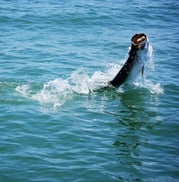
April 15, 2022
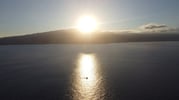
April 26, 2022

June 22, 2022

July 1, 2024

January 7, 2022
Related Articles
April 25, 2022
August 22, 2022
Featured Locations
- Fishing Charters Near Me
- Austin Fishing Guides
- Biloxi Fishing Charters
- Bradenton Fishing Charters
- Cabo San Lucas Fishing Charters
- Cancun Fishing Charters
- Cape Coral Fishing Charters
- Charleston Fishing Charters
- Clearwater Fishing Charters
- Corpus Christi Fishing Charters
- Crystal River Fishing Charters
- Dauphin Island Fishing Charters
- Daytona Beach Fishing Charters
- Destin Fishing Charters
- Fort Lauderdale Fishing Charters
- Fort Myers Fishing Charters
- Fort Walton Beach Fishing Charters
- Galveston Fishing Charters
- Gulf Shores Fishing Charters
- Hatteras Fishing Charters
- Hilton Head Fishing Charters
- Islamorada Fishing Charters
- Jacksonville Fishing Charters
- Jupiter Fishing Charters
- Key Largo Fishing Charters
- Key West Fishing Charters
- Kona Fishing Charters
- Lakeside Marblehead Fishing Charters
- Marathon Fishing Charters
- Marco Island Fishing Charters
- Miami Fishing Charters
- Montauk Fishing Charters
- Morehead City Fishing Charters
- Naples Fishing Charters
- New Orleans Fishing Charters
- New Smyrna Beach Fishing Charters
- Ocean City Fishing Charters
- Orange Beach Fishing Charters
- Panama City Beach Fishing Charters
- Pensacola Fishing Charters
- Pompano Beach Fishing Charters
- Port Aransas Fishing Charters
- Port Orange Fishing Charters
- Rockport Fishing Charters
- San Diego Fishing Charters
- San Juan Fishing Charters
- Sarasota Fishing Charters
- South Padre Island Fishing Charters
- St. Augustine Fishing Charters
- St. Petersburg Fishing Charters
- Tampa Fishing Charters
- Tarpon Springs Fishing Charters
- Venice Fishing Charters
- Virginia Beach Fishing Charters
- West Palm Beach Fishing Charters
- Wilmington Fishing Charters
- Wrightsville Beach Fishing Charters


